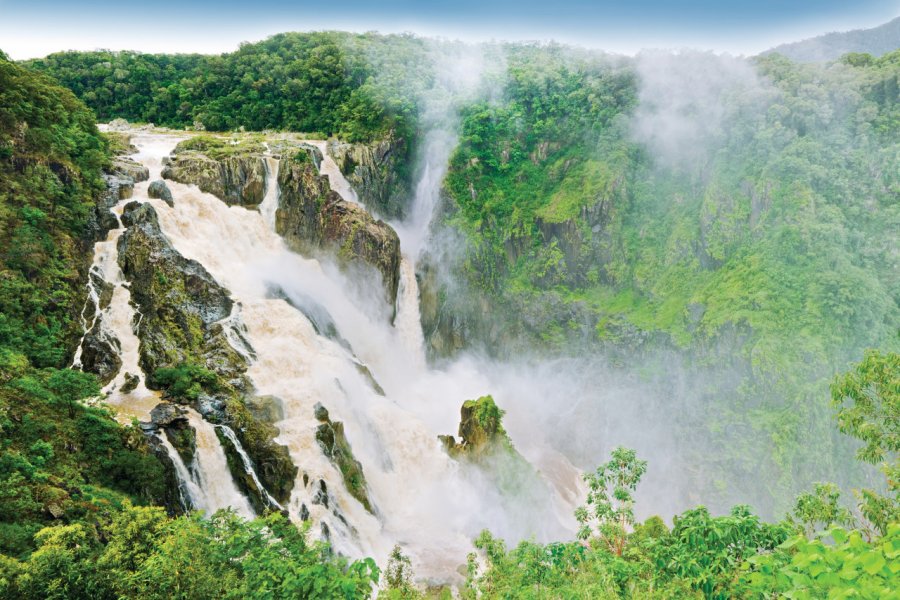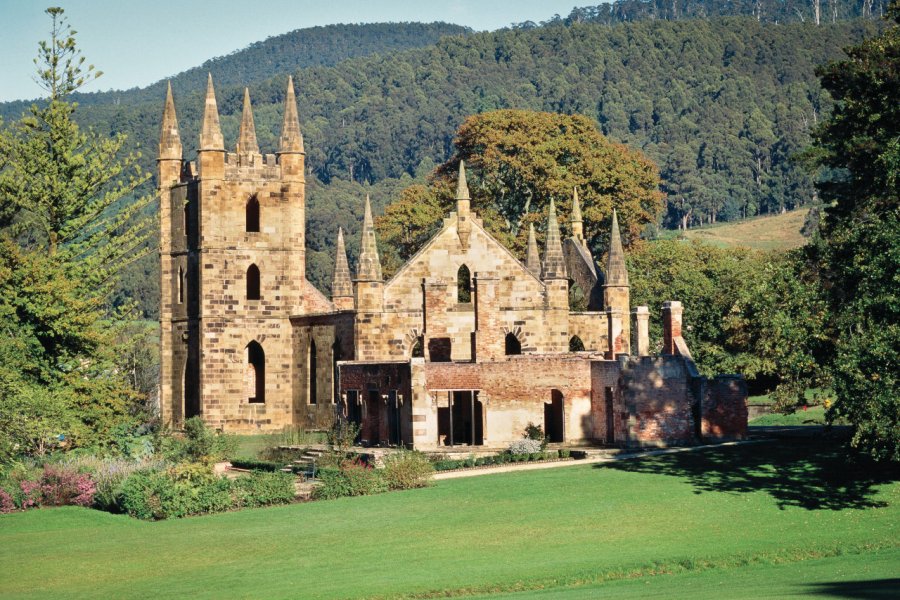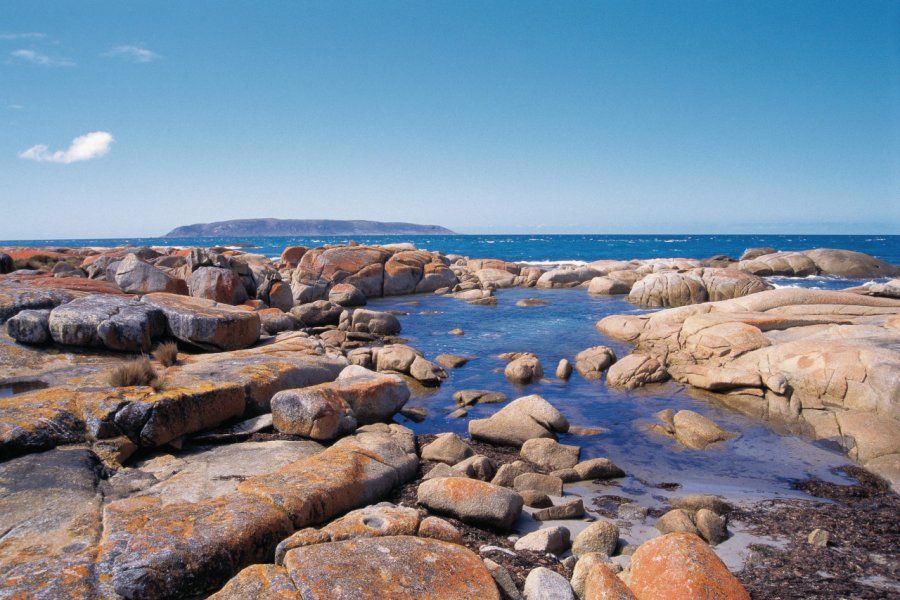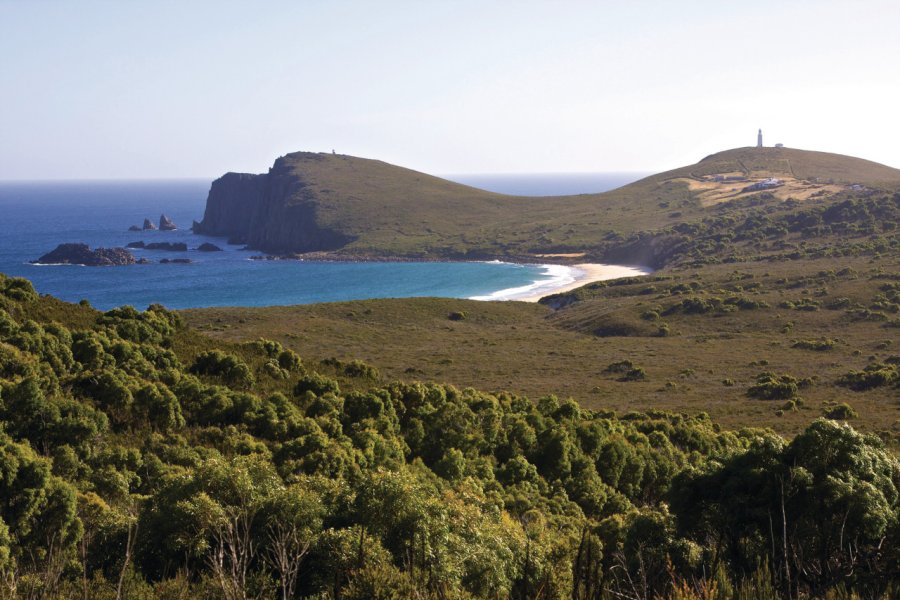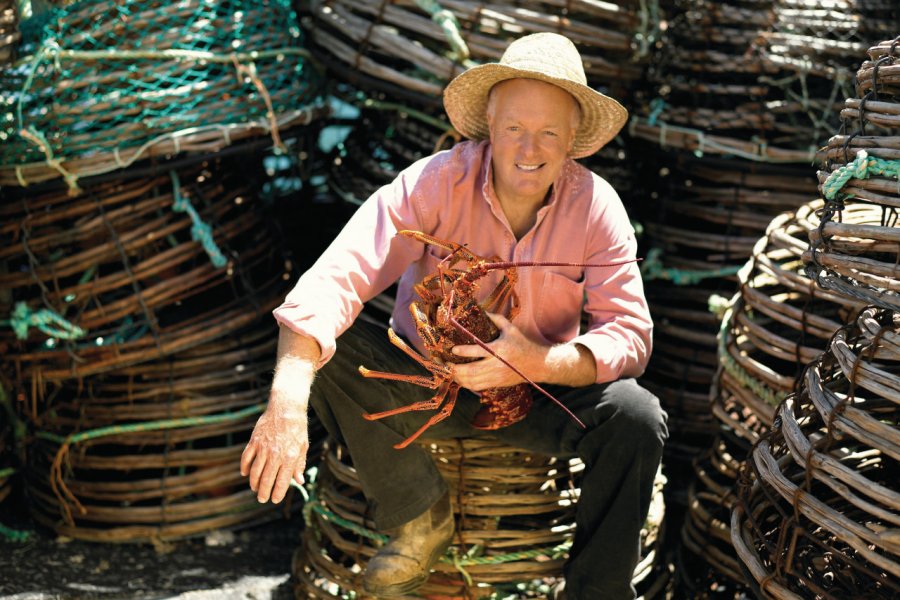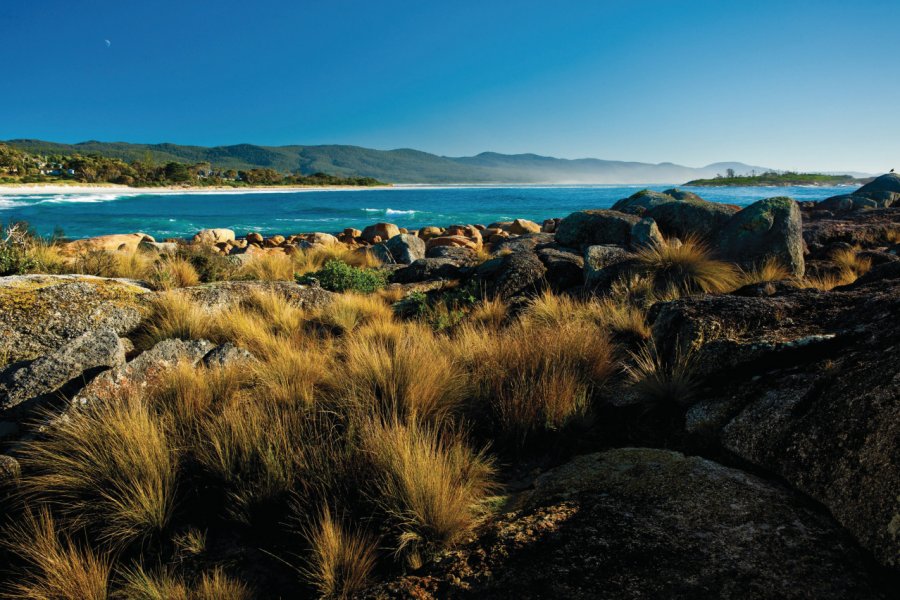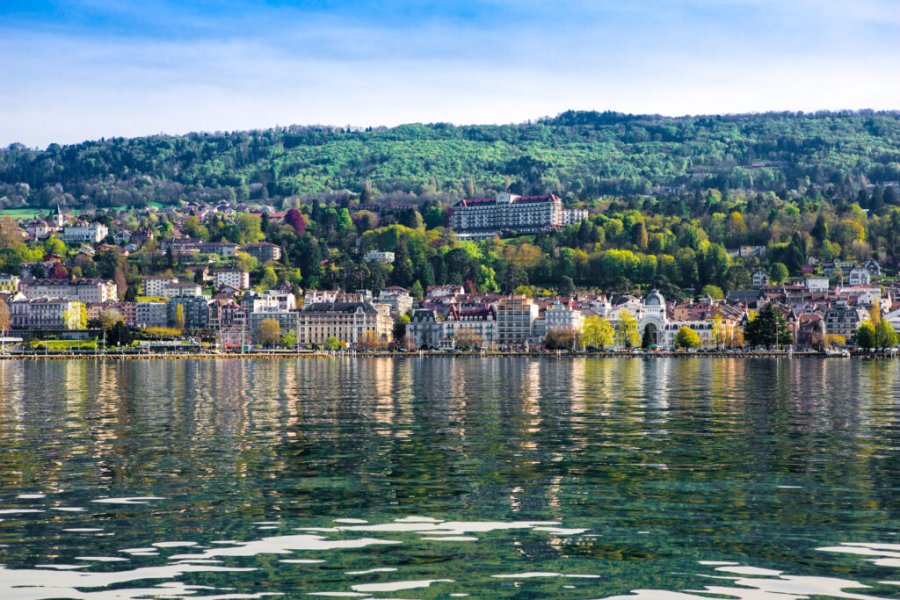Travel Guide Tasmania
Tasmania is an island state inAustralia , 200 km southeast of Melbourne. It stands out for its modest size compared to the vast continental territory. Its capital and epicenter, Hobart , was built at the foot of Mount Wellington as a penal colony in 1803. It isAustralia's oldest city, now a modern city with skyscrapers, the financial and administrative heart of Tasmania. This island is 50% forested and boasts exceptional biodiversity. Its wallabies, small kangaroos, are well known. Tasmania is even home to an endemic species: the Tasmanian devil, a carnivorous marsupial that looks like a small bear weighing around ten kilos, with a ferocious cry. Tourism is an important part of the Tasmanian economy, which is also rich in minerals.
You can enjoy a wide range of nature-related activities: fishing, hiking, cruising, exploring natural parks, cruising around the island to discover the variety of Tasmanian landscapes such as Wine Glass Bay or Cradle Mountain. Discover the Bay of Fires, famous for its dazzling beaches, crystal-clear waters and orange-tinted rocks. Bruny Island will enchant you with its coastal scenery, diverse wildlife and local delicacies. From the summit of Mount Wellington, panoramic views over Hobart are spectacular, while the Tahune Airwalk invites you to take an aerial walk through the trees of the Huon Valley forest.
The vast Tarkine Range National Park immerses you in an unspoilt wilderness, while the gentle Russell Cascades are surrounded by ancient forest. The Museum of Old and New Art, known as MONA, is a cultural must-see with bold collections. The Tasman Peninsula impresses with its towering cliffs and dramatic coastal landscapes, while the Royal Botanic Gardens of Tasmania is a botanical sanctuary offering rejuvenating tranquility. Every destination in Tasmania is an invitation to marvel and connect with the nature and history of this remarkable island.
Tasmania is also a land that cultivates the art of living, with vineyards and breweries that produce the famous Boag and Cascade beers. King Island on the north-west coast is a gourmet's delight, with its cheese and dairy stores. Finally, Bridport, in the north, is home to a public golf course established in 2004, now one of the world's top 100 not-to-be-missed golf courses. And although it often rains in Tasmania, you'll always receive a warm welcome. Our Tasmania travel guide invites you to discover the region's finest hotels, restaurants and places of interest.
What to visit Tasmania?
When to go to Tasmania?
When to visit Tasmania? It's a question worth pondering, as each season envelops the island in its own distinct atmosphere. It can be visited all year round, but the best time to visit Tasmania is from November to April, when the austral summer is in full swing. During these months, the days are long and sunny, perfect for exploring the national parks and enjoying outdoor activities.
If you visit Tasmania in December or January, expect a special buzz with events such as the famous Sydney to Hobart Yacht Race and the Taste of Tasmania.
February continues the trend with pleasant temperatures and prices starting to drop, while March sees the Ten Days on the Island festival, a major cultural event.
Autumn and April-May wrap Tasmania in warm hues and more attractive prices, while still offering a mild climate for hiking. The Targa Tasmania rally takes place at the end of April/beginning of May over 5 days all over the island, bringing together a large number of motor sports enthusiasts. It's a good idea to plan ahead for this period. At the same time, the Carrick Agricultural Fair is held to the west of Launceston. Other highlights include the Royal Launceston Show and the Royal Hobart Show, held in October. Easter is punctuated by two music festivals: the Falls Festival in Marion Bay and Southern Roots in Hobart.
As for winter, it can be snowy, making road links difficult.
From June to August, lovers of coolness and tranquillity will be delighted, although temperatures are cooler and days shorter.
Summer is the most pleasant for temperatures.
When to go to Tasmania to avoid the crowds? Spring and autumn are the favorites, since the peak period is December-January, as in southern Australia. The tourist offer is less extensive than on the Big Island, but remains adequate all year round.
Weather at the moment
Tasmania has an oceanic climate with four seasons:
Insummer (December/February), temperatures rise to 21°C (24°C inland).
On the Central Plateau, Liawenee is one of the coldest regions.
Autumn (March/May) is variable, with average temperatures ranging from 7°C at night to around 17°C during the day, with sunny days and occasional showers.
Winter (June/July) is wet and cold, with heavy snowfalls and highs ranging from 12°C on the coast to 3°C on the central plateau.
Spring makes the transition, with afternoon sea breezes.
The currency in Tasmania is the Australian dollar (AU$ or AUD). The overall cost of living is higher than in Europe. Even so, car rentals remain attractive and there are many economical forms of accommodation. To save on transport costs, you can buy a bus pass and keep an eye on airline offers. ATMs and bureaux de change are easily accessible in urban areas. Credit cards are widely accepted, and tipping is not customary, although it is always appreciated for exceptional service. In Tasmania, you'll find accommodation options ranging from budget hostels to luxury hotels, and experiences from the simple to the sumptuous.
The formalities for flying to Tasmania depend on where you're coming from:
Nationals of many countries must obtain a visa for Australia, which is also essential for visiting Tasmania. Make sure you have the right visa for the duration and nature of your stay before you leave;
If you are a citizen of the European Union, you will need a passport valid for at least 6 months after your departure date, and/or an electronic visa or electronic travel authorization(eVisitor, free for 3 months) or ETA (Electronic Travel Authority), i.e. a specific visa, before you leave;
Note that Australia offers one-year working vacation visas for young people up to the age of 35.
Always check the most recent requirements, and consult the website of your nearest Australianembassy or consulate for up-to-date information.
For a classic holiday, Tasmania in Australia presents no major health risks. Nevertheless, make sure that all vaccinations required in France are up to date before you leave. Depending on the length and type of your stay, vaccinations against hepatitis B and Japanese encephalitis are recommended.
Please note: your worst enemies will be the sun and sandflies. The sun's rays are particularly strong in Australia, which is close to the equator and the hole in the ozone layer. It's essential to use a high factor sunscreen to avoid sunburn. Sandflies (or biting midges) are tiny insects whose bites are very irritating, and which are found in particular near beaches and estuaries in tropical and subtropical zones (QLD, NT, WA). Repellent is all you need to get rid of them.
And good news: the water in Tasmania is delicious and drinkable straight from the tap, so don't worry about staying hydrated. Just a word of advice: if you're going hiking, always take water with you; you never know where the adventure will take you!
Practical information
- When to travel?
- Weather forecast
- Budget
- Formalities
- Health
- How to travel by yourself?
- How to get organized?
- Getting around
Media
How to go to Tasmania? Our advice & tips
For a Tasmanian tour package, choose an agency that can weave together natural, historical and gastronomic experiences. These all-inclusive packages let you immerse yourself in the island's beauty without the hassle of planning. From hikes in the national parks to wine tastings, every detail is designed with your comfort in mind.Australia is a popular destination, and a visit to Tasmania is a must on any tour package. Many tour operators offer tailor-made or turnkey tours. Since the continent is so vast, each tour generally focuses on a specific region. For example, a package tour combining Melbourne, Sydney and Tasmania is a good option.
Discover our selection of travel agencies for this destinationGoing it alone in Tasmania is an accessible adventure, thanks to the friendliness of the locals and the ease of navigation. Hire a vehicle to criss-cross the picturesque roads at your own pace. Accommodation varies, from campsites to cosy B&Bs. Always bring a waterproof layer for the vagaries of the weather, and for hiking, bring good maps available from tourist information centers. Don't miss the local markets to sample local produce, and strike up a conversation with Tasmanians, always ready to share the secrets of their island. It's easy to travel alone in Australia and Tasmania. Several hundred thousand young people visit Australia alone every year, thanks to the Working Holiday visa that gives them access to Tasmania. The infrastructure is modern. However, if you're going on an adventure in remote areas or hiking in the national parks, make sure you always give your itinerary to another person.
Tasmania is served by Hobart International Airport and Bass Strait ferries . The best way to get around Tasmania is to rent a car, as the road network is very good. Be careful, you'll be driving on the left. Alternatively, you can use the Metro Tasmania bus routes and the narrow-gauge railway that links the five major population centers and the mining and forestry centers on the west coast and to the northwest. Cycling enthusiasts will appreciate the many cycle paths. If you're planning to visit nearby islands like Bruny Island, ferries are reliable and offer regular services. Don't forget to download the timetables or consult local tourist offices for personalized travel advice.
Find unique Stay Offers with our Partners
Pictures and images Tasmania
Featured articles Tasmania
Other destinations Tasmania
- Freycinet National Park
- Tasman National Park
- Cradle Mountain - Lake St Clair National Park
- Hobart
- Mount Field National Park
- Port Arthur
- Hartz Mountains National Park
- Maria Island
- Eaglehawk Neck
- Flinders Island
- King Island
- Franklin - Gordon Wild Rivers National Park
- New Norfolk
- Bicheno
- Bruny Island
- Longford
- Stanley
- Mole Creek
- Richmond
- Huon Valley
- Cockle Creek Road
- Launceston
- Boat Harbour
- Ross
- Hastings
- Bridport
- Oatlands
- Tarraleah
- Strahan
- Deloraine

